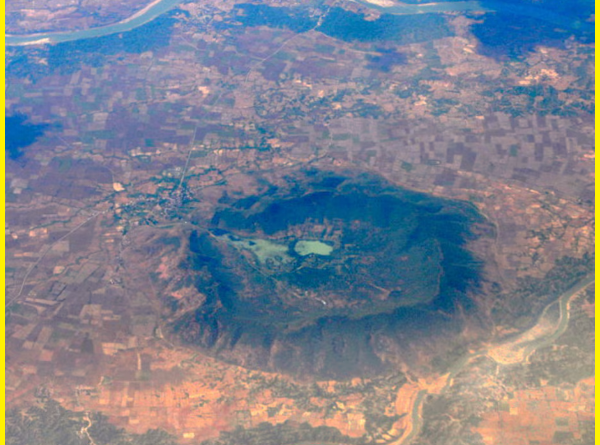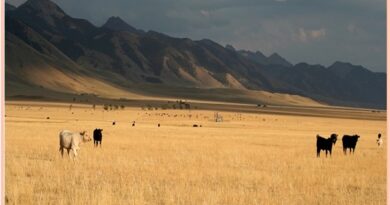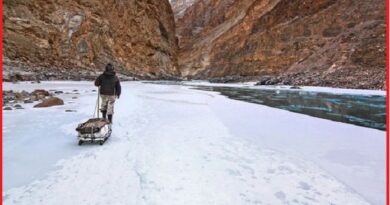Beyond Earth: The Fascination of ‘Luna Crater’ in Kutchh
Luna Crater
Luna crater is an impact crater at Luna village in Bhuj taluka of Kutch district Gujarat, India. The crater is located in a low-lying, soft, flat area compared to other craters in India, which are usually found on hard, rocky surfaces. Rock fragments and glasslike materials found at the site indicate a meteorite impact. The date of the Crater is around 6900 years. The crater, located in the Rann of Kutch, is circular, with a diameter of 1.8 kilometers, and its lowest point is about 2 meters above sea level.
The crater is visibly a kilometer wide, but the satellite imagery shows it is spread over a 5-kilometer radius. Characteristically the Crater is not a typical impact site, but a unique site in the world. A round lake of 1 km2 in area and 2 meters in depth lies in the crater’s center, which remains dry during summer. The Crater area is covered with thick vegetation of thorny Acacia species. The crater’s rim, with up-turned beds and shutter cone, has no hard rocks.
1. Location
The crater measures approximately 1.8 kilometers across, and its outer rim rises about 6 meters above the crater floor. The Luna structure is situated in India’s Gujarat state in the Banni Plains grassland. The Great Rann of Kutch, an expansive white salt desert, lies in the northern part of Kutchh. Parts of these low-lying areas are submerged for much of the year, and the Luna crater often contains water.

2. Age of the Crater
The crater often contains water due to its low-lying nature, However, researchers took advantage of a dry period in May 2022 and collected samples from throughout the structure, Analysis of the rock materials and sediments, scientists detected several minerals that are uncommon in natural settings on Earth. These rare minerals form under the extremely high temperatures and pressures generated when a meteorite hits the ground. The researchers also measured anomalously high concentrations of the rare element iridium, consistent with findings at other impact craters. Some other fragments appearing like metallic meteorites that are dark, heavy, and magnetic with spherical cavities are found at the rim of the crater, and glassy objects comparable to tektites have been recovered.
Also read- Kalo Dungar Gujarat- A Stunning sea facing hill known for Unusual Phenomenon
Based on the radiocarbon dating of plant remnants contained in silt at the site, the Researcher determined the impact occurred about 6,900 years ago. The crater is near the remains of an ancient Harappan settlement, but it is uncertain whether the impact predates the arrival of humans.
3. How to Reach Luna Crater
Reaching Luna Crater can be an exciting adventure, but it requires careful planning and consideration due to its remote location and rugged terrain. Luna Crater is located in Luna village near Bhirandiara, A BSF Check post in Kutchh District. The Crater is also reachable from Lakhpat another known place in Kutchh, From here the Luna crater is around 60 km. Depending on your starting point, you may need to travel by air to Bhuj or via train to Bhuj. From there, you’ll likely need to arrange for a four-wheel-drive vehicle, as the terrain leading to Luna Crater may be rough and unpaved.



